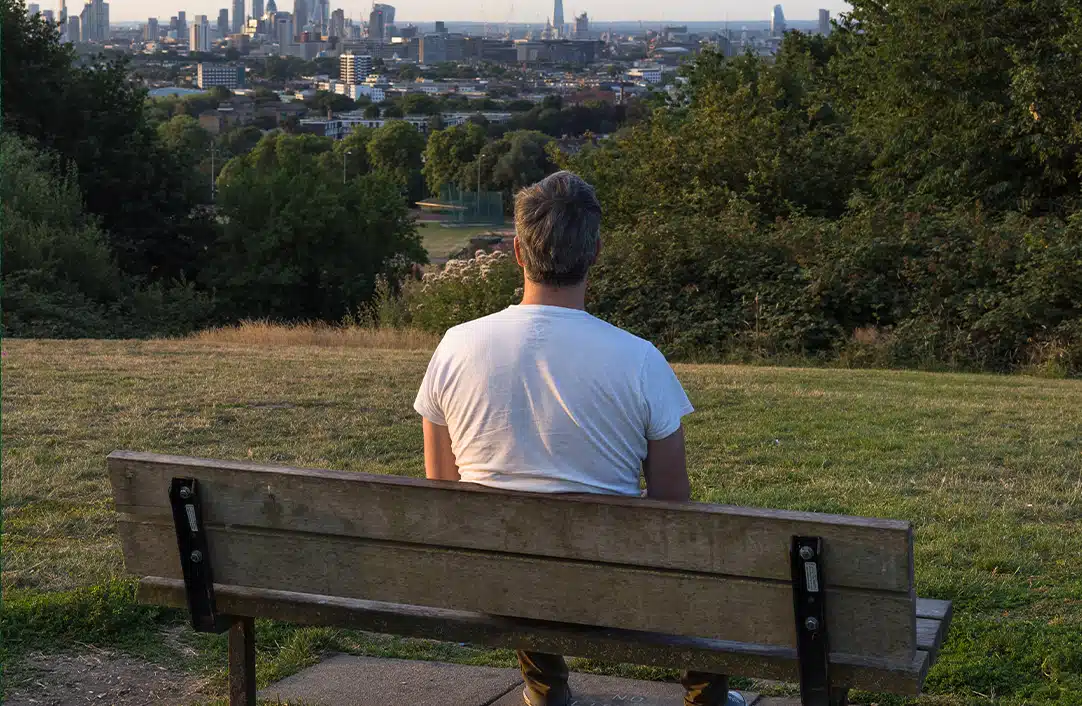

How to Heal From Sexual Abuse
From our earliest experiences, we start to innately conceptualize what it means to heal. When we bumped our head and Mom gave us a hug, reassuring us the pain would subside, that instantly seemed to help! Or when we took a tumble off a bike and watched as a bruise formed and then faded over time; we started to get a sense of how we could get “all better.” Survivors of child sexual abuse know that healing from trauma is much more complex than recovering from a physical bump or bruise. And while each person’s healing journey can take a unique personal form, there are universal principles that can help foster healing.
Definition of Sexual Abuse
What Does It Mean to Heal?
Healing from trauma is often a dynamic and individualized journey. You seek a restoration of your physical, emotional, and psychological well-being. Recovering from a past trauma like sexual abuse goes far beyond just feeling temporary relief, or the absence of discomfort—it encompasses feeling a sense of balance, wholeness, and vitality. Healing from trauma requires a holistic approach. It includes addressing physical ailments, seeking emotional well-being, fostering mental resilience, and even seeking a spiritual wholeness. Progress in any of these aspects can have important repercussions to your leading a fulfilling and meaningful life despite what you have experienced in your past.
What Are the Effects of Sexual Abuse?
What Does Healing Look Like?
As a survivor of sexual abuse, you might seek physical healing by forming a positive perception of and connection with your own body. This could look like restoring a sense of vitality, health, and, in some cases, regular functionality of normal biorhythms and activities. Survivors often must work extra hard to interpret, manage, and express their feelings. You may even experience a challenge in identifying what emotions you are feeling. You want to find a place of emotional stability and resilience, and be enabled to express how you feel without being absorbed by the intensity of what you are feeling.
Cognitively, you may want to overcome the interruptions associated with post-traumatic stress. You seek to develop healthy patterns of thought, a balanced outlook on what tools you can use to effectively cope with new experiences, and manage the tasks of daily life. You may want to experience a sense of connection, purpose, and inner tranquility. Perhaps you want to find meaning and alignment with your core values. Or, maybe you want to restore a feeling of hope in your own future.
What Resources Can Help Me Heal?
Saprea seeks to provide support and resources that meet you wherever you are in the path of healing. Survivors of sexual abuse can greatly benefit from reviewing information that helps illuminate the impacts of trauma. This information provides validation and helps you draw connections between what you have experienced in the past, and how it is affecting your life.
Saprea’s Online Healing Resources
Using content and strategies from our Saprea Retreat, the staff at Saprea have created a library of research-based online resources to help you address symptoms that are often associated with the trauma of child sexual abuse. These resources can help you understand the whys behind the effects trauma may have had on your life, as well as the long-lasting impacts of shame and its underlying connection to other symptoms you may experience.
Once you understand some of the whys behind the symptoms and experiences you have been coping with, you will be better prepared to actively seek healing in many aspects of your life.
Saprea’s Three Healing Practices
At times you might wish the path to healing was organized into a nicely drawn map with identical milestones for every person to reach in the same sequence, but the truth is that you need to chart this journey within the context of our own lives. As the team at Saprea has worked with thousands of survivors of childhood trauma, it has become clear that there are hallmarks of the healing process that are universal.
Allow Yourself Time and Celebrate Small Victories
Recognize that healing often takes time. Allow yourself room for patience and acknowledge the growth that you have made. Periodically assess your progress. Recognize and celebrate the small victories you have made along the way. Keeping track of how far you've come can provide motivation and a sense of accomplishment that adds fuel to the healing process.
Helping Others Heal From Sexual Abuse
Many survivors seek to manage their symptoms through a combination of ongoing education, self-care, medication, and therapy. But it’s also important for them to have the support of friends, family, and loved ones. If you are seeking to help someone close to you cope with the effects of child sexual abuse, take confidence that your support will have an important impact.
Things you can do to offer support include:
- Get educated on the impact of trauma on the brain’s limbic system and how triggers arise.
- Help reinforce self-esteem by being complimentary of their many positive qualities. Don’t just focus on one area, but find ways to offer sincere compliments and assure them of how they add meaning to your life, even when they are experiencing struggles.
- Offer support in coping with addiction and seeking helpful treatment when needed.
- Be aware of words and actions that can add to the guilt and shame they may be feeling. Conversely, you can also alleviate guilt and shame by how you respond to what they share.
- Be supportive of everyday applications for grounding and mindfulness practice. Offer to participate in those practices with them.
- Be patient and understanding with regards to sex and intimacy. Allow your partner to communicate about their experience and adapt your approach when needed.
- Affirm their hope in the future, especially when they set goals or formulate their hopes and aspirations for healing. Help them celebrate as they reach for and accomplish these goals. Offer compassion when they encounter setbacks.
- Reassure your loved one that you will support them during times of mental and emotional stress.*
Helpful things to express:
- I believe you.
- I’m sorry this happened to you.
- The abuse wasn’t your fault.
- Thank you for telling me/trusting me.
- I’m always here if you need to talk.
- How can I help/support you?
- This doesn’t change how I think/feel about you.
Offer Support in Meaningful Ways Along the Healing Journey
Remember that your influence can play a positive role in many different types of circumstances. Refer to this chart for suggestions on how to offer support:
When your loved one is moving forward with confidence:
- Help celebrate the progress they have made, and are continuing to make.
- Encourage them to keep stretching toward their goals.
- Help them create connections where they can cultivate strength and validation.
- Help build momentum through affirmations and appreciation for how they are helping others.
When your loved one is feeling resistance or concern:
- Listen and validate what they are experiencing.
- Offer to assist in problem solving or working through challenges and setbacks with the positive strategies that have worked in the past.
When your loved one feels stuck:
- Support them as they seek stability; reinforce the benefits of healthy connections.
- Offer unconditional positive regard and compassion!
- Help them connect with the present moments and take on life one day at a time. Sometimes this might include grounding techniques.
When your loved one is in crisis:
- Work to intervene in an appropriate way.
- Support them during triggers.
- Help them avoid situations that could be harmful or destructive.
- Seek additional resources that they can lean upon to expand their network of support.
- Involve competent professionals to offer support and services.
Offer Encouragement to Access Saprea’s Healing Resources
If you have a survivor of child sexual abuse in your life that has not had the opportunity to access the supports that Saprea offers, consider how you can bring awareness of these resources. As you do, it is helpful to keep in mind that each step in a healing journey is a personal one. Offer compassion and support rather than pressure. Here are some suggestions on how you can raise an invitation with care, and in an informative way.



About the author
Brian Walker
Research and Program Development Strategist
Recent blogs

Male Sexual Abuse

What to do if a Sex Offender Moves to Your Neighborhood?






